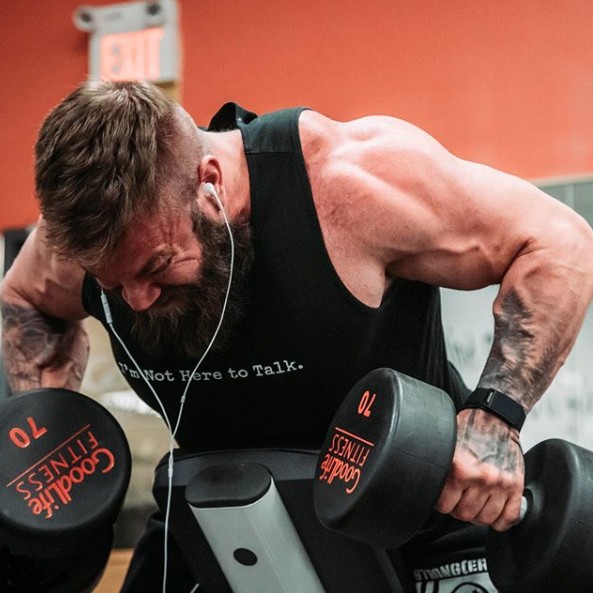
This article is about breathing and will be the first of many articles on this topic.
As a disclaimer, I could submit every article, every coaching blog, on this topic from now till I reach the end of my days (or till Dave and the team at elitefts get sick of my sh*t and hand me my walking papers) and only scratch the surface of this incredibly broad and complex topic.
That being said, here goes...
Have you ever been punched in the face?
Like, really got your bell rung?
Seeing stars,
lose consciousness,
“What’s your name?”
“Where are you?”
“Who’s the president?”
Likely in this confusing barrage of questioning someone, at some point, a stranger starts to shine a flashlight into your eyes. At the time, you might be sure as to why this stranger is shining a flashlight directly into your eyes while vigorously interrogating you.
WATCH: Jordan Shallow Explains How Bicep Curls Can Help with Your Shoulder and Elbow Pain
In the case of trauma, or suspected trauma of the brain, our eyes act as a gateway into the brain—more specifically, the function of our cranial nerves. This window allows us to receive real-time information regarding the potential resting state of the brain.
Now, as the eyes can provide us with this gateway, this portal, into the structural integrity of the brain, our breath gives us this same access. But not to the brain’s structure. Rather, our breath can give us information as to the brain’s function (roughly speaking).
Breath gives us vital information to the goings-on within a subsystem of our brain called the autonomic nervous system (ANS), a behind-the-scenes motherboard that can be broken down into two classifications:
- Parasympathetic nervous system
- Sympathetic nervous systems
The parasympathetic nervous system is responsible for the “rest and digest” processes within the body, whereas the sympathetic nervous system is responsible for “fight or flight” processes within the body.

The ANS and its two sub-components control unconscious processes, everything from norepinephrine release (adrenaline) to the motility of the gastrointestinal system (digestion).
This double-pronged spear is one of the most complex and difficult systems in the body to understand, let alone control.
But just as the eyes give us some insight as to the goings-on within the brain, our breath can give us some insights into and even some control over the goings-on within the ANS.
How it Works
Our breath is something that exists both in the realm of the ANS and in the realm of our conscious control. Before reading this article, you were likely breathing reflexively as a consequence of the ANS. Now that you’ve been reading, perhaps you have a heightened awareness of this process, and perhaps you’ve even taken the wheel by purposefully inhaling and exhaling at your conscious whim.
This is a very unique capacity exclusive to the breath. No other system that exists in the ANS has the ability to come out of our body’s “auto-pilot” mode and allow us to take the helm.
Respiratory Sinus Arrhythmia:
The respiratory sinus arrhythmia (RSA) is a normal process of neuro respiratory physiology. Most people freak out when they hear the word “arrhythmia.” The RSA attempts to explain (in part) how we breathe.
Inhalation:
From a neurological perspective, inhalation is governed by the sympathetic nervous system, which makes sense if we think about it. As we breathe in, we are bringing vital oxygen into our systems—oxygen that needs to be circulated throughout our bodies. Circulation is governed by an increase in the heart rate. And which branch of the ANS would increase the heart rate? The sympathetic one.
Exhalation:
Now, let’s think about the opposite: exhalation. Oxygen has been moved throughout our systems, making its way to tissues, and diffusing via the complex interactions of gases in the blood into said tissues. From there, we are left with a decreased demand for our blood to circulate and a decreased demand for our heart rates to be high. So, reflexively, the parasympathetic system takes the wheel for the duration of the exhalation process.
This is roughly the science behind the current study behind heart rate variability (HRV).
Conclusion
This is a brief introduction to a topic that we’ll chase down the rabbit hole over the series of the next couple of months. To master the breath and breathing can be one of our best assets for improving so many aspects of our lives and training—from improving the range of motion to increasing our ability to recover, to maximizing our performance.
Stay Strong,
Dr. Jordan Shallow DC











1 Comment